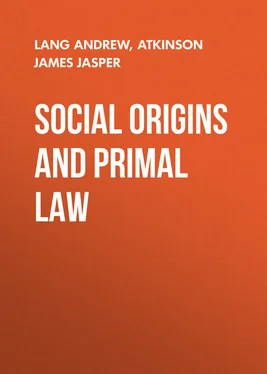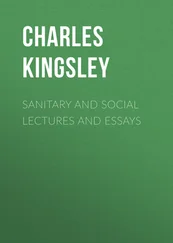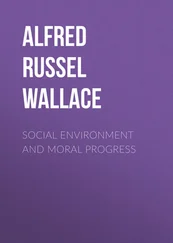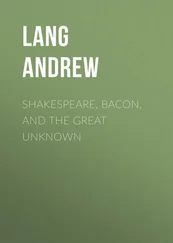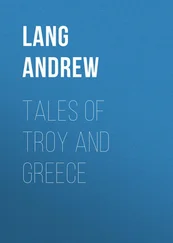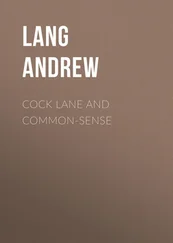Andrew Lang - Social Origins and Primal Law
Здесь есть возможность читать онлайн «Andrew Lang - Social Origins and Primal Law» — ознакомительный отрывок электронной книги совершенно бесплатно, а после прочтения отрывка купить полную версию. В некоторых случаях можно слушать аудио, скачать через торрент в формате fb2 и присутствует краткое содержание. Жанр: foreign_antique, foreign_prose, на английском языке. Описание произведения, (предисловие) а так же отзывы посетителей доступны на портале библиотеки ЛибКат.
- Название:Social Origins and Primal Law
- Автор:
- Жанр:
- Год:неизвестен
- ISBN:нет данных
- Рейтинг книги:3 / 5. Голосов: 1
-
Избранное:Добавить в избранное
- Отзывы:
-
Ваша оценка:
- 60
- 1
- 2
- 3
- 4
- 5
Social Origins and Primal Law: краткое содержание, описание и аннотация
Предлагаем к чтению аннотацию, описание, краткое содержание или предисловие (зависит от того, что написал сам автор книги «Social Origins and Primal Law»). Если вы не нашли необходимую информацию о книге — напишите в комментариях, мы постараемся отыскать её.
Social Origins and Primal Law — читать онлайн ознакомительный отрывок
Ниже представлен текст книги, разбитый по страницам. Система сохранения места последней прочитанной страницы, позволяет с удобством читать онлайн бесплатно книгу «Social Origins and Primal Law», без необходимости каждый раз заново искать на чём Вы остановились. Поставьте закладку, и сможете в любой момент перейти на страницу, на которой закончили чтение.
Интервал:
Закладка:
TOTEMS ALL THE WAY
In any case, by Mr. Fison's and Mr. Howitt's theory and our own, we have totems almost all the way: totems in the so-called 'primary divisions' (phratries); totems in the so-called gentes , and all these divisions (setting the Arunta apart) are strictly exogamous. The four or eight 'classes,' on the other hand, are apparently not of totemic origin. However much the systems may be complicated and inter-twisted, the basis of the whole, except of the four or eight 'classes,' is, I think, the totem exogamous prohibition. There are many examples of the type; thus the Urabunna 'are divided into two exogamous intermarrying classes, which are respectively called Matthurie and Kirarawa, and the members of these again are divided into a series of totemic groups, for which the native name is Thunthunnie . A Matthurie man must marry a Kirarawa women' (as in the system of the Kamil-speaking tribes, or Kamilaroi, reported on by Mr. Fison) – 'and not only this, but a man of one totem must marry a woman of another totem.' This is precisely what I should expect. It works out thus:
{ Old Local Totem Group} Matthurie.
{ New 'Phratry' }
{ Old Local Totem Group} Kirarawa.
{ New 'Phratry' }
Each of these 'phratries' has five totems, not found in the other class, and how this occurred, if not by actual deliberate arrangement, I do not know. One thing is clear: totem and phratry are prior to 'class' divisions. They occur where 'class' divisions do not. But my theory does not involve the deliberate introduction of exogamy, by an exogamous bisection of groups not hitherto exogamous, or by making two pre-existing totem groups exogamous. I take the groups to have been exogamous already, before the blending in connubium of two local totem groups (now 'phratries'), each including numbers of already exogamous totem kindreds. They were exogamous before the 'phratries' existed, and after their falling into the two phratries, exogamous they remained.
DISTRIBUTION OF TOTEMS IN THE 'PHRATRIES'
Mr. McLennan, ere he had the information now before us, wrote, in 1865, 'Most probably contiguous groups would be composed of exactly the same stocks' (we can now, for 'stocks,' read 'totem kins') – 'would contain gentes of precisely the same names.' 88 88 Studies in Ancient History , p. 221.
This is obvious, for Emu, Kangaroo, Wild Duck, Opossum, Snake, and Lizard, living in the same region, would raid each other (by the hypothesis) for wives, and each foreign wife would bring her own totem name into each group. Yet we find that the two 'primary classes' (phratries) of the Urabunna (which, on my theory, represent two primitive totem local groups, say Emu and Kangaroo, each with its representatives of all other totem groups within raiding distance) never contain the same totems.
It is mathematically impossible that this exclusiveness should be the result of accident. On a first consideration, therefore, I took it to be the result of deliberate legislative design, at the moment when on my hypothesis two local totem groups, containing members of several totems of descent , united in connubium . The totem names, I at first conceived, with reluctance, must have been consciously and deliberately meted out between the two local totem groups, now become phratries. This idea did not involve so stringent and useless a measure as that of segmenting the two phratries into minor totem groups: however the idea was still too much akin to that of Harpocration as regards the arbitrary drafting of the Attic population into γένη. But, on further reflection, I conceived that my first theory was superfluous. Given the existence of local groups, as such totemic, and of totem kins of descent within the original local totem groups, the actual results, I thought, arise automatically, as soon as two local totem groups agree to intermarry. Men and women must many out of their local totem group (now 'phratry') and must marry out of their totem of descent. Consequently, no one totem could possibly exist in both phratries. This I now, on third thoughts, 'which are a wiser first,' deem erroneous. The automatic arraying of one set of totems into one, or another set into the other, phratry, would not occur. The totems have been divided between the two phratries. 89 89 Suppose we take a group ranging in a given locality, and known to its neighbours as the Emu group. Let us also take a similar and similarly situated Kangaroo group. Let us suppose that each such group has raided for its wives among Opossum, Grub, Cat, and Dingo groups. By female descent, both the Emu and Kangaroo groups will contain persons of the Opossum, Grub, Cat, and Dingo groups. This being so a man of the Emu local group, named Grub by totem, might marry a woman of the Emu local group, by totem of descent an Opossum; and similarly in the Kangaroo group. But, as Dr. Durkheim remarks in another case, 'the old prohibition', deeply rooted in manners and customs, survives ( L'Année Sociologique , v. 107, note). Now 'the old prohibition' was that a man of the Emu group was not to marry a woman of the Emu group. That rule endures, though the Emu group now contains men and women of several distinct totem kins. To escape from the difficulty, by my theory, Emu local totem group makes connubium with Kangaroo local totem group. Any Emu man may marry any Kangaroo woman not of his own totem by descent. But this does not, automatically, throw Opossum and Grub into one, Cat and Dingo into another, of the two local totem groups, Emu and Kangaroo, now become phratries, with loss of their local character. For if a man, by phratry Emu, and by totem of descent Cat, marries a woman, by phratry Kangaroo, and by totem of descent Grub, their children, by female descent, are Kangaroo Grubs. Meanwhile, if a man, by phratry Kangaroo, and by totem Cat, marries a woman, by phratry Emu, and by totem Grub, their children are Emu Grubs. There are thus Grubs in both phratries, a thing that never occurs (except among the Arunta). Therefore the division of the totem kins, some into one phratry, others into the other, is not automatic. There might be a tendency, by way of making assurance doubly sure, for the totem kins to be assorted into the two phratries, but some kind of deliberate arrangement does seem necessary. The same necessity attends Dr. Durkheim's theory later criticised.
This condition of affairs is universal in Australia, except where, as among the Arunta and similar tribes, the same totem comes to exist in both phratries, so that men and women of the same totem, but of opposite phratries, may intermarry. That breach of old rule, we shall try to show, arises from the peculiar animistic philosophy of the Arunta, by virtue of which totems are no longer totems of descent, but are otherwise obtained. The Kamilaroi practice of interphratry marriage arises out of respect for totem and neglect of phratry law.
My conjecture takes for granted, let me repeat, that, before the 'bisection,' or the amalgamation, which produced the two exogamous 'classes,' the totem kindreds were already exogamous. My reasons for this opinion have already been given, in the discussion of Mr. Crawley's theory of the origin of exogamy ( supra ), to which the reader may refer. My suggestion makes the growth of exogamy non-moral, gradual, and almost unconscious, till it is clinched and stereotyped by the totem tabu. 90 90 See again Durkheim, in L'Année Sociologique , i. 47-57, on the superstition as to blood, and the totem as a sacred representative of the inviolable blood of the kindred. That superstition gives religious sanction to a pre-existing exogamous tendency.
The opposite theory – namely, the deliberate bisection into exogamous 'classes,' of totem groups, or of an 'undivided commune' not previously exogamous, appeals too much, I repeat, to conscious and – as far as we can see – motiveless legislation, at an early stage. The bisection must have had a purpose, and has no visible purpose except the establishment o f exogamy, and why did the 'undivided commune' establish that?
Интервал:
Закладка:
Похожие книги на «Social Origins and Primal Law»
Представляем Вашему вниманию похожие книги на «Social Origins and Primal Law» списком для выбора. Мы отобрали схожую по названию и смыслу литературу в надежде предоставить читателям больше вариантов отыскать новые, интересные, ещё непрочитанные произведения.
Обсуждение, отзывы о книге «Social Origins and Primal Law» и просто собственные мнения читателей. Оставьте ваши комментарии, напишите, что Вы думаете о произведении, его смысле или главных героях. Укажите что конкретно понравилось, а что нет, и почему Вы так считаете.
